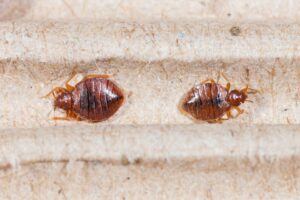Debunking 4 Misconceptions About Bedbugs

Bedbugs have become a growing problem in many parts of the world, leaving people in fear about these creepy crawlies. However, much of the panic around bedbugs arises from misconceptions about these critters that have been ingrained into public consciousness.
Learn more on the subject by knowing four commonly held misconceptions about bedbugs and getting a more educated and enlightened understanding of these rather misunderstood insects.
1. Bedbugs Can Survive a Whole Year in Your House Without Feeding
Bedbugs can only live without food for a few months at room temperature, according to most specialists, but this is debatable. They could potentially go longer without food in colder temperatures but not usually for an entire year.
A bedbug’s ability to go without food varies significantly with the stage of its life cycle and the ambient temperature. Compared to their juvenile counterparts, adult bedbugs have a greater fasting tolerance. To grow and develop, young bedbugs need to eat more often. However, bedbugs can go longer without a meal since their metabolism slows down in lower temperatures.
Although bedbugs might live for up to a year without food in ideal conditions, this is not the case in real life. If an adult bedbug wanted to last a year without eating, it would need to survive in a very chilly environment. However, most households maintain a constant room temperature throughout the year.
2. Bedbugs Are Only Active at Night
While they prefer to feed at night, bedbugs can also do so during the day. They do this because they find it easiest to gorge themselves on human beings while they are fast asleep. Still, if they feel secure enough, they eat during the day. If their human host is awake throughout the day, like someone who covers the night shift, bedbugs can also adjust to feeding during the day.
3. Bedbugs Are Hard to See
Bed bugs are widely believed to be impossible to spot with the naked eye. However, bed bugs are bigger than most people realize. Adult bed bugs can be as little as an apple seed and have a characteristic reddish-brown color, making them easy to spot even without a microscope.
In addition, you can see bed bug eggs with the naked eye. These eggs are no bigger than a pinhead, but they can stand out against the background because of their pearly white color.
Bed bugs can be difficult to spot because they like to conceal themselves in tight spaces. As a result, they are tricky to locate if you are unfamiliar with their hiding locations. However, if you know what to look for, you can identify bed bugs with your own eyes.
4. Bedbugs Only Like Unsanitary Environments
Bed bugs may seem to thrive in filthy environments, but that is far from the truth. In truth, bed bugs can be found in various settings. Bed bug infestations can be everywhere from high-end apartments to hospitals. A human host’s body heat, exhaled carbon dioxide, and blood serve as the primary lures for these insects, rather than grime or stale food.
Clutter can contribute to bed bug problems, giving the insects extra locations to conceal themselves. Cluttered areas sometimes have more nooks and crevices for bed bugs to hide, making finding and destroying them more challenging.
Good hygiene and cleanliness go a long way toward preventing the spread of bed bugs. Maintaining a regular cleaning schedule and utilizing disinfection solutions can aid in warding off bed bugs. However, remember that squeaky-clean conditions are insufficient to keep bed bugs at bay.
A pest exterminator is one of the best ways to ensure you eliminate a bedbug infestation once they settle in your house. Contact us at Highland Pest Control, Inc., for pest extermination services in West Palm Beach and Okeechobee, FL.
